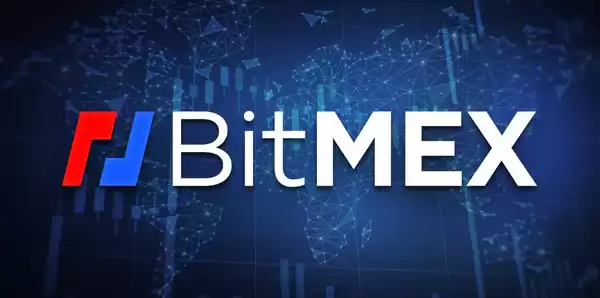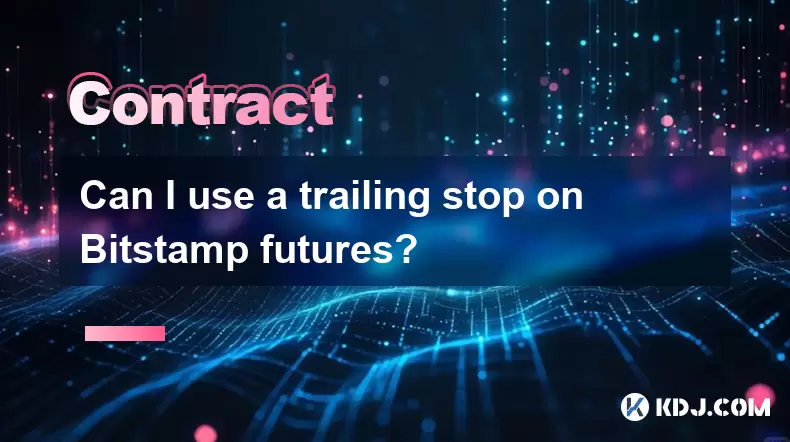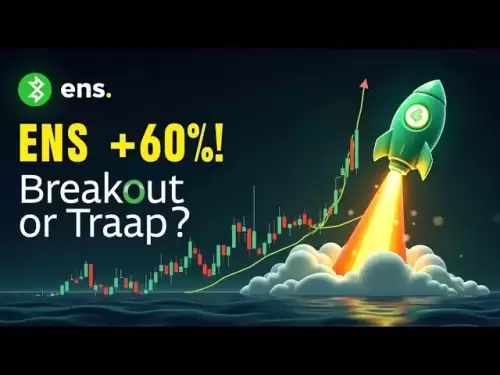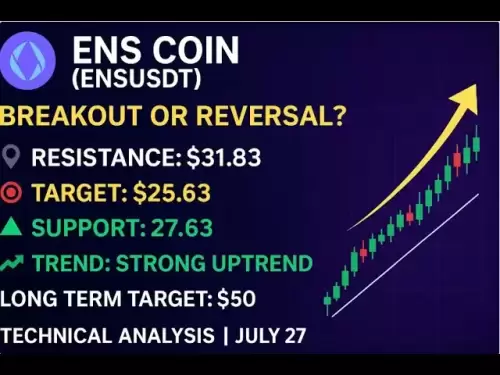-
 Bitcoin
Bitcoin $117900
0.31% -
 Ethereum
Ethereum $3766
0.28% -
 XRP
XRP $3.176
-0.31% -
 Tether USDt
Tether USDt $1.000
0.00% -
 BNB
BNB $795.6
1.51% -
 Solana
Solana $186.8
-1.09% -
 USDC
USDC $0.9999
-0.01% -
 Dogecoin
Dogecoin $0.2353
-1.33% -
 TRON
TRON $0.3226
1.49% -
 Cardano
Cardano $0.8172
-1.08% -
 Sui
Sui $4.178
3.06% -
 Hyperliquid
Hyperliquid $43.05
-3.39% -
 Stellar
Stellar $0.4367
-0.57% -
 Chainlink
Chainlink $18.62
1.47% -
 Hedera
Hedera $0.2828
6.63% -
 Bitcoin Cash
Bitcoin Cash $584.7
5.65% -
 Avalanche
Avalanche $24.81
2.53% -
 Litecoin
Litecoin $112.8
-0.88% -
 UNUS SED LEO
UNUS SED LEO $8.975
-0.08% -
 Shiba Inu
Shiba Inu $0.00001395
-1.07% -
 Toncoin
Toncoin $3.285
-1.05% -
 Ethena USDe
Ethena USDe $1.001
0.01% -
 Polkadot
Polkadot $4.123
0.76% -
 Uniswap
Uniswap $10.49
-0.18% -
 Monero
Monero $326.5
0.14% -
 Dai
Dai $0.9999
-0.02% -
 Bitget Token
Bitget Token $4.576
0.34% -
 Pepe
Pepe $0.00001247
-1.55% -
 Cronos
Cronos $0.1400
3.77% -
 Aave
Aave $295.1
-0.73%
BitMEX How to play u-standard contracts
u-Standard contracts on BitMEX offer traders access to perpetual futures contracts with no expiry, providing ample opportunities for speculation on cryptocurrency price movements with varying strategies and risk management techniques.
Nov 13, 2024 at 05:24 pm

BitMEX: A Comprehensive Guide to u-Standard Contracts Trading
BitMEX, a renowned cryptocurrency exchange, offers a diverse range of trading products, including its u-Standard contracts. These contracts are perpetual futures contracts settled in either Bitcoin (BTC) or USDT, providing traders with ample opportunities to speculate on the price movements of various cryptocurrencies.
This comprehensive guide will delve into the intricate details of u-Standard contracts on BitMEX, empowering you to navigate the platform effectively and maximize your trading potential. We will explore the key concepts, strategies, and risk management techniques involved in u-Standard contract trading.
Key Concepts of u-Standard Contracts
- Perpetual: Unlike traditional futures contracts that expire on a specific date, u-Standard contracts have no set expiry. They remain open indefinitely, allowing traders to maintain their positions for as long as they deem necessary.
- Marked Price: The marked price, calculated using a formula that incorporates multiple liquidity sources, serves as the reference price for u-Standard contracts. All margin calculations, liquidations, and settlements are based on the marked price.
- Funding Rates: Binance Funding Rates represent the periodic payments exchanged between traders with long and short positions to maintain a balance between the perpetual contract and the spot market price. Positive funding rates imply an excess of long positions, while negative rates indicate an abundance of short positions.
- Leverage: BitMEX offers generous leverage of up to 100x on u-Standard contracts, enabling traders to control a significant amount of capital with a smaller initial investment. However, it's crucial to exercise caution as higher leverage amplifies both potential profits and losses.
- Liquidations: When the unrealized profit or loss on a trader's position exceeds their available margin, a liquidation occurs. The trader's position is automatically closed at the prevailing marked price, and any remaining balance is credited (for profitable positions) or debited (for losing positions) from their account.
Strategies for Trading u-Standard Contracts
- Scalping: Scalping involves entering and exiting numerous short-term trades within a trading session, capturing small profit margins on each trade. Scalpers rely on technical analysis and high-frequency trading techniques to identify potential trading opportunities.
- Day Trading: Day traders aim to profit from intraday price fluctuations by opening and closing positions within the same trading day. They often employ technical analysis to identify trend reversals, breakout patterns, and support and resistance levels.
- Range Trading: Range traders focus on identifying trading ranges or sideways market movements. They buy near support levels and sell near resistance levels, profiting from predictable price swings within the established range.
- Trend Trading: Trend traders seek to profit from sustained price trends by riding the momentum of the market. They enter long positions during uptrends and short positions during downtrends, holding their positions until the trend reverses or significant indicators suggest a change in market sentiment.
- Hedging: Hedging involves using opposite positions in different markets or assets to reduce the overall risk exposure of a portfolio. For instance, a trader with a long position in Bitcoin on the spot market can hedge their exposure by taking a short position in a u-Standard Bitcoin contract on BitMEX.
Risk Management in u-Standard Contract Trading
- Stop-Loss Orders: Stop-loss orders allow traders to pre-determine an exit price at which their position will be automatically closed to limit potential losses. Traders can place stop-loss orders above the entry price for long positions and below the entry price for short positions.
- Position Sizing: Managing position size is crucial to avoid catastrophic losses. Traders should carefully calculate the amount of capital they are willing to risk on each trade, considering their account balance, leverage level, and risk tolerance.
- Trailing Stop-Loss Orders: Trailing stop-loss orders follow the market price, adjusting the stop-loss level as the price moves in a favorable direction. This dynamic approach helps protect profits while allowing the trade to continue running in the trader's favor.
- Managing Leverage: Leverage can amplify profits, but it can also lead to significant losses. Traders should always use leverage judiciously, carefully considering their risk tolerance and the potential magnitude of market fluctuations.
- Monitoring Market Conditions: Continuously monitoring market conditions is essential for successful trading. Traders should keep abreast of the latest news, economic indicators, and technical analysis to anticipate market movements and adjust their trading strategies accordingly.
Disclaimer:info@kdj.com
The information provided is not trading advice. kdj.com does not assume any responsibility for any investments made based on the information provided in this article. Cryptocurrencies are highly volatile and it is highly recommended that you invest with caution after thorough research!
If you believe that the content used on this website infringes your copyright, please contact us immediately (info@kdj.com) and we will delete it promptly.
- Cryptos to Watch in 2025: Punisher Coin, Chainlink, and the Altcoin Arena
- 2025-07-27 18:30:13
- Bitcoin, Altcoins, Rebound: Navigating the Crypto Comeback Trail
- 2025-07-27 18:30:13
- Ethereum, Bitcoin, and Altcoins: A Shift in Crypto Tides?
- 2025-07-27 19:10:13
- Windtree Therapeutics' Bold BNB Strategy: A $520 Million Crypto Play
- 2025-07-27 19:10:13
- Solana, Staking, and Unilabs: What's the Buzz in the Crypto Space?
- 2025-07-27 16:50:13
- VeChain, HBAR, Remittix: Navigating the Crypto Landscape in 2025
- 2025-07-27 17:10:12
Related knowledge

Why is my Bitstamp futures position being liquidated?
Jul 23,2025 at 11:08am
Understanding Futures Liquidation on BitstampFutures trading on Bitstamp involves borrowing funds to open leveraged positions, which amplifies both po...

Does Bitstamp offer inverse contracts?
Jul 23,2025 at 01:28pm
Understanding Inverse Contracts in Cryptocurrency TradingIn the realm of cryptocurrency derivatives, inverse contracts are a specific type of futures ...

What is the difference between futures and perpetuals on Bitstamp?
Jul 27,2025 at 05:08am
Understanding Futures Contracts on BitstampFutures contracts on Bitstamp are financial derivatives that allow traders to speculate on the future price...

How to find your Bitstamp futures trade history?
Jul 23,2025 at 08:07am
Understanding Bitstamp and Futures Trading AvailabilityAs of the current state of Bitstamp’s service offerings, it is critical to clarify that Bitstam...

Can I use a trailing stop on Bitstamp futures?
Jul 23,2025 at 01:42pm
Understanding Trailing Stops in Cryptocurrency TradingA trailing stop is a dynamic type of stop-loss order that adjusts automatically as the price of ...

Can I use a trailing stop on Bitstamp futures?
Jul 25,2025 at 02:28am
Understanding Trailing Stops in Cryptocurrency Futures TradingA trailing stop is a dynamic type of stop-loss order that adjusts automatically as the m...

Why is my Bitstamp futures position being liquidated?
Jul 23,2025 at 11:08am
Understanding Futures Liquidation on BitstampFutures trading on Bitstamp involves borrowing funds to open leveraged positions, which amplifies both po...

Does Bitstamp offer inverse contracts?
Jul 23,2025 at 01:28pm
Understanding Inverse Contracts in Cryptocurrency TradingIn the realm of cryptocurrency derivatives, inverse contracts are a specific type of futures ...

What is the difference between futures and perpetuals on Bitstamp?
Jul 27,2025 at 05:08am
Understanding Futures Contracts on BitstampFutures contracts on Bitstamp are financial derivatives that allow traders to speculate on the future price...

How to find your Bitstamp futures trade history?
Jul 23,2025 at 08:07am
Understanding Bitstamp and Futures Trading AvailabilityAs of the current state of Bitstamp’s service offerings, it is critical to clarify that Bitstam...

Can I use a trailing stop on Bitstamp futures?
Jul 23,2025 at 01:42pm
Understanding Trailing Stops in Cryptocurrency TradingA trailing stop is a dynamic type of stop-loss order that adjusts automatically as the price of ...

Can I use a trailing stop on Bitstamp futures?
Jul 25,2025 at 02:28am
Understanding Trailing Stops in Cryptocurrency Futures TradingA trailing stop is a dynamic type of stop-loss order that adjusts automatically as the m...
See all articles

























































































